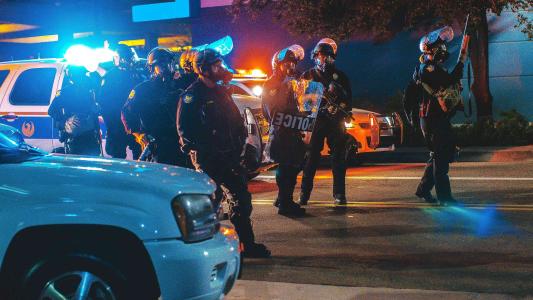A police lineup is a classic movie scene: A suspect stands among a group of other people (who look generally similar), while a witness is asked to identify the person they saw commit the crime. In the real world, police also ask witnesses to look at pages of photo lineups to ID potential suspects.
But the process has a significant flaw: They usually only feature front and profile views of suspects, which might not be the angle at which a witness saw the crime. Failure to make an ID could let criminals go free, while incorrect eyewitness identifications play a role in many wrongful convictions.
Now, a new type of police lineup, which uses 3D technology to let eyewitnesses view suspects from any angle, may be a solution.
The new technology: Researchers at the University of Birmingham’s School of Psychology created new software that allows eyewitnesses to interact with the suspect lineup. They can rotate 3D renderings of suspects and view their heads from various angles.
Retrieving memories accurately relies on the context in which they are retrieved.
Melissa Colloff
Instead of simply looking at a suspect from two angles — head-on and profile — as typically done in a witness lineup, the eyewitnesses could rotate the image at will. By doing so, they could match the alignment of the face to what they remembered.
“We worked closely with law enforcement to develop the interactive lineup procedure to be cost effective and work with current police identification systems. The procedure is a significant advance in improving the accuracy of eyewitness identifications,” Heather Flowe, co-lead researcher, said in a statement.
Does it work? After creating the new type of lineup technology, the team put it to the test. They recruited 3,000 volunteer “witnesses” to test their capacity to accurately distinguish between guilty and innocent persons. After watching a staged crime on video, the witnesses looked at images of the criminal among filler images of similar faces. One group of volunteers could rotate the images with the new technology, and another group could not.
In a study published in Nature’s Scientific Reports, researchers report that rotating faces to match the angle from which the witness saw the crime significantly improved their accuracy. The researchers also discovered witnesses placed the pictures into optimal positions for identification on their own, without being told.
“We know that retrieving memories accurately relies on the context in which they are retrieved being similar to when the memory was formed. The experiments we carried out show this theory in practice. Our participants actively sought out a familiar angle for the lineup image, to help them retrieve information from memory,” co-author Melissa Colloff told UKAuthority.
The study found that the 3D police lineup increased identification accuracy in two ways: it helped reduce the number of misidentifications, and it also increased the number of times people correctly identified the perpetrator.
Why this matters: Throughout the world, law enforcement uses lineups to help them identify criminals. Witness identification can be very compelling in a jury trial.
But the results aren’t always accurate. A growing body of evidence shows that police lineups are unreliable and may lead to wrongful convictions and jail time for innocent people.
Since 1989, post-conviction DNA evidence has been used to reverse more than 375 wrongful convictions in the United States, according to the Innocence Project. Approximately 69% of the original convictions involved incorrect eyewitness identifications.
“Someone gets on the stand, looks at someone in the courtroom, points to them and says, ‘That’s the person.’ That’s a very powerful indication to a jury,” John DeCarlo, an associate professor of criminal justice at the University of New Haven, who was not involved in the new study, told Scientific American.
And, according to The Innocence Project, eyewitness identifications are the most prevalent and convincing evidence used against criminal defendants. Despite this (or perhaps because of it), misidentifications are the most common cause of wrongful convictions. This new technology could be a first step toward better, more reliable, eyewitness identification, and reducing wrongful convictions.
We’d love to hear from you! If you have a comment about this article or if you have a tip for a future Freethink story, please email us at [email protected].






